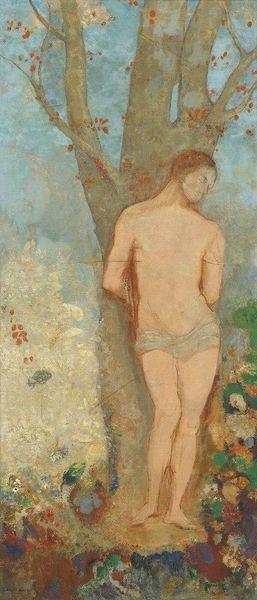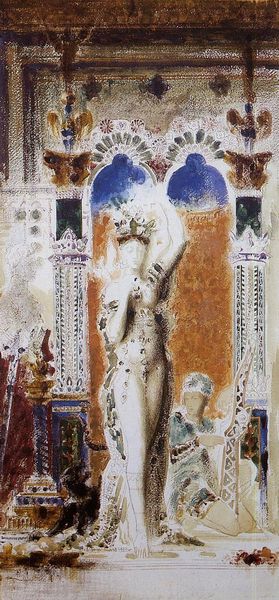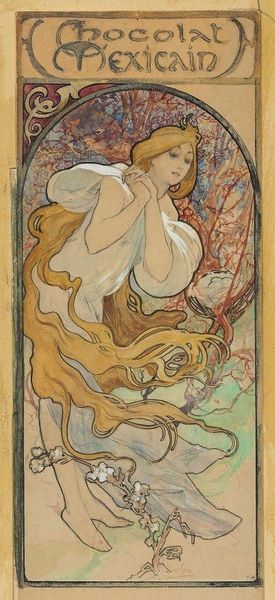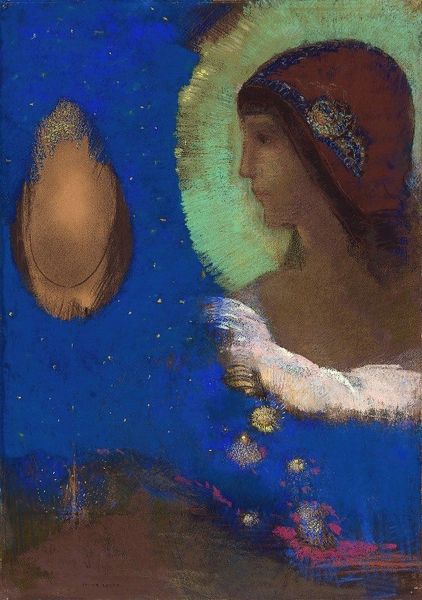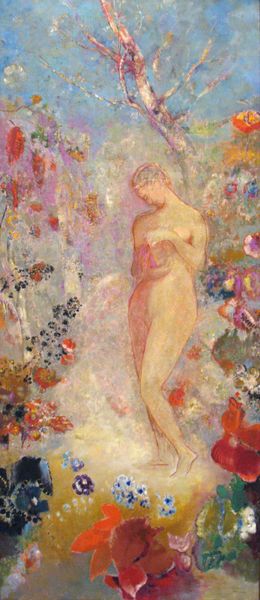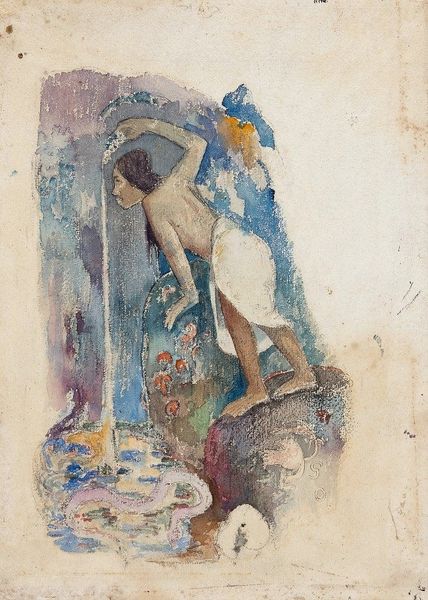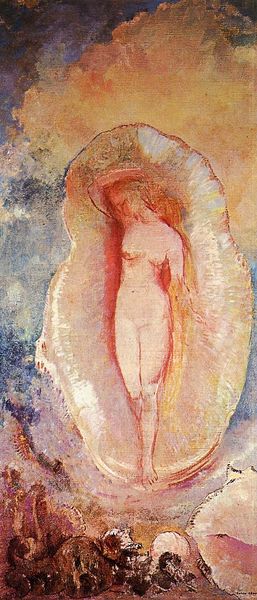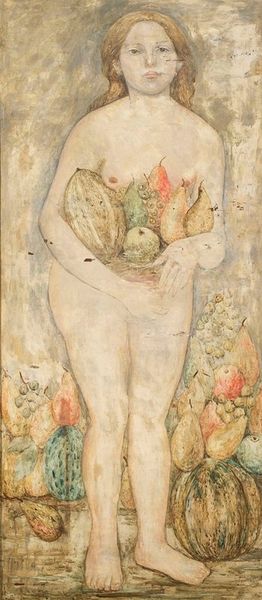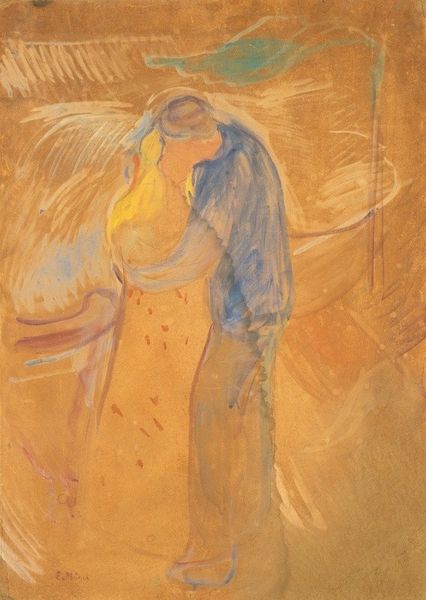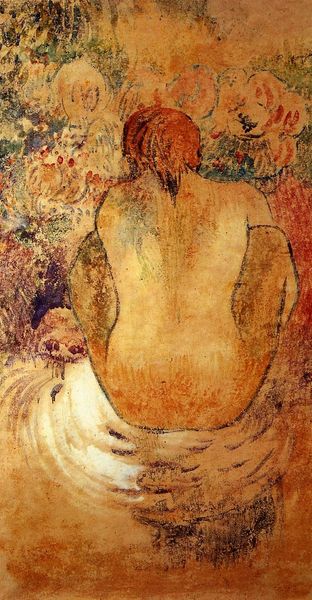
Copyright: Public domain
Editor: Here we have Odilon Redon’s "Andromeda," painted in 1912. The application of oil paint is dreamlike, the color palette conveying this sense of otherworldly fantasy, but a real sense of struggle persists... What do you make of this painting? Curator: It’s interesting how Redon grapples with mythological subjects, particularly in the context of early 20th-century anxieties. He appropriates classical imagery, but strips it of its heroic facade. Considering the rise of Freudian psychoanalysis at the time, might Andromeda's vulnerability and captivity symbolize deeper psychological struggles? How might Redon be reflecting the position of women in society through the lens of myth? Editor: That's a fascinating point about psychoanalysis! The raw emotionality makes more sense. I can see the anxiety. Curator: Indeed. Notice also the use of color. While seemingly beautiful, that dominant blue—usually associated with serenity—here almost feels like a cold prison, doesn’t it? Editor: Absolutely. It is a bit jarring and oppressive despite being delicate and ethereal, it really does change the reading of the scene. Curator: Exactly. The romantic interpretation gives way to social critique. By exhibiting in venues supported by emerging democratic social structures, such symbolic visual choices were intended to engage emerging viewing audiences. It provokes us to consider how narratives of power, vulnerability, and freedom are visualized and consumed in the modern world. Editor: It seems so subtle on first glance. Thanks! Now it's resonating on another level. Curator: My pleasure! I’m glad we could shed light on how artistic choices can both reflect and critique their socio-political context.
Comments
No comments
Be the first to comment and join the conversation on the ultimate creative platform.

